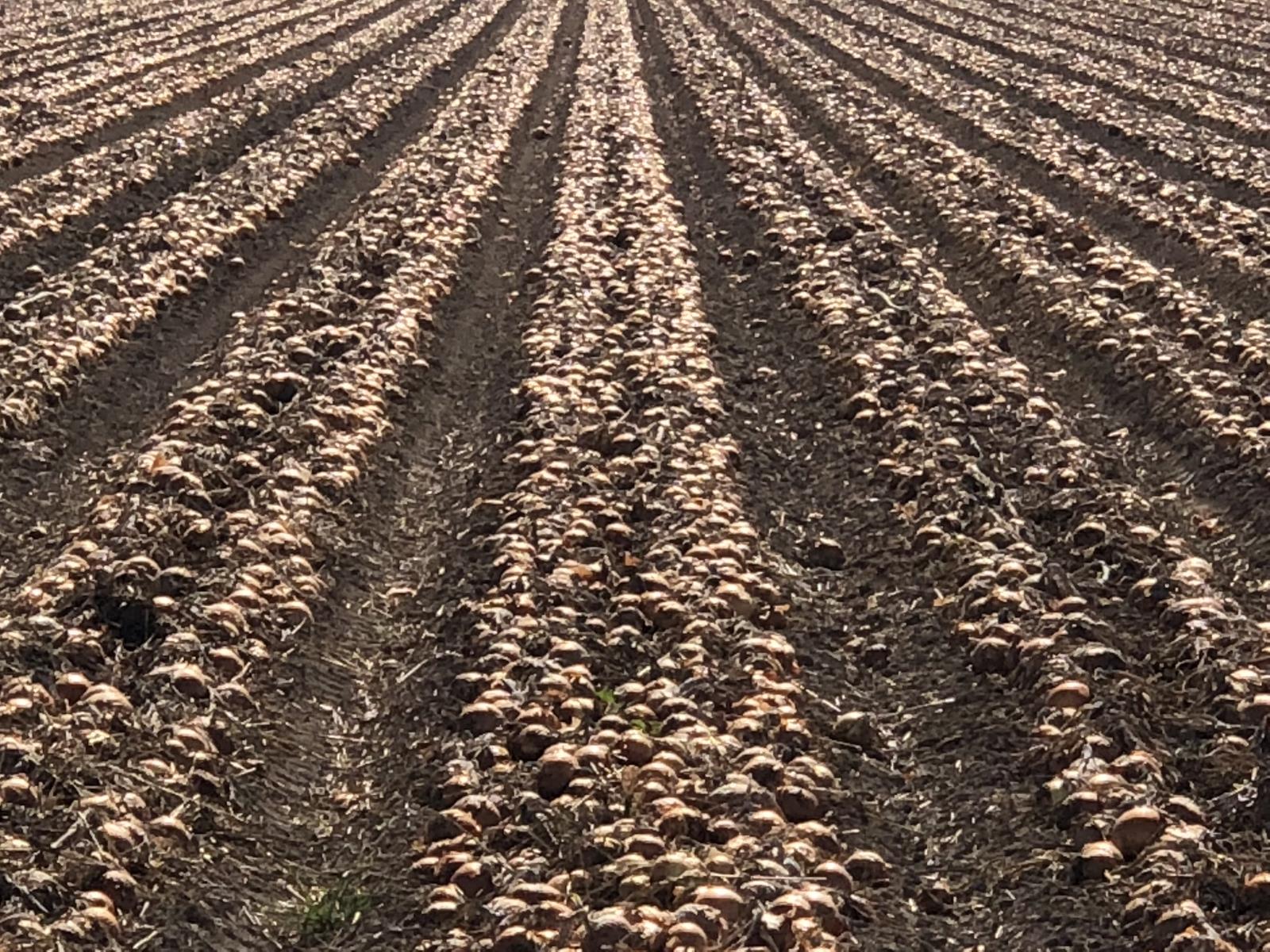Cold snap impacted several Idaho crops

The unseasonably cold weather had an impact on several major crops grown in the state, from potatoes and sugar beets in Eastern and Southcentral Idaho to onions, sweet corn seed and dry beans in Southwestern Idaho.
The kind of cold weather that hit Eastern Idaho – temperatures as low as single digits in some places and from 12-17 in most others – can affect potato quality and also the storability of spuds.
While the full extent of the damage won’t be known for a while, it’s expected to be significant.
“From what I see, there is significant damage,” said Aberdeen spud farmer Ritchey Toevs.
Anywhere from 10-20 percent of Idaho’s potato crop was still in the ground when the cold weather hit beginning Oct. 9, said Shawn Boyle, president of the Idaho Grower Shippers Association, which represents spud farmers.
St. Anthony farmer Zak Miller said he’s hearing that as much as 10 percent of the state’s 2019 potato crop could have sustained major damage.
“The impact is going to be widespread across all of Eastern Idaho, from American Falls north,” said Miller, Idaho Farm Bureau Federation’s director of commodities. “It’s going to be a bit financial hit for some farmers; you don’t plant potatoes without a lot of investment.”
“We won’t know the full extent of the damage for another 30 to 60 days,” IFBF President Bryan Searle, a potato farmer from Shelley, said Oct. 14.
Sugar beets
Sugar beets from Twin Falls to Eastern Idaho sustained some cold weather damage as well, said Rupert farmer Duane Grant, chairman of the Snake River Sugar Co.’s board of directors.
“There is definitely some damage; we didn’t escape unscathed,” he said.
The cold could impact the storability of sugar beets, he said, though the extent of the damage is unknown at this point. The company held up sugar beet harvest for a few days to give the beets time to heal.
The state’s sugar beet harvest was just beginning when the cold hit and Grant said the possibility of having 85-90 percent of the crop going into storage in a somewhat compromised position is a little concerning.
“What we don’t know yet is to what extent the storability of the crop has been impacted,” Grant said. But, he added, “So far, the indications are that the beets are going to heal up….”
Onions
There were a couple thousand acres of bulb onions still in the field when the cold weather hit the Treasure Valley area of southwestern Idaho, according to onion industry leaders.
Onion farmers in the Idaho-Eastern Oregon growing region produce about 25 percent of the nation’s Spanish bulb onion supply.
Temperatures in that region fell into the mid-20s for several days and that kind of cold can cause major damage to onions, said Eddie Rodriguez, co-owner of Partners Produce, an onion shipper in Payette.
“It was well into the mid-20s from Vale to Ontario (in Oregon), from Parma to Weiser (in Idaho) and everywhere in between, and there were a lot of onion acres still out,” he said.
Early indications are the cold caused significant damage to onions that were still in the field, Rodriguez said.
“From what I’ve seen, it doesn’t look good,” he said.
Sweet corn seed
More than 60 percent of the world’s temperate sweet corn seed is grown in the Treasure Valley and that crop may have taken a beating because of the cold weather, said George Crookham, CEO of Crookham Seed Co.
As much as 15-25 percent of the valley’s sweet corn seed was still in the field when the cold hit, he estimates.
“We really won’t know the extent of the damage until we harvest and test it … but we’re fairly certain there was damage out there,” Crookham said.
He said the damage may lead to a global shortage of temperature sweet corn seed. Most of the world’s sweet corn seed is temperate, while some is grown for tropical regions.
“The cold weather did some damage to some onion fields and it did some damage to some sweet corn fields as well,” Crookham said.
Crookham is the only company that produces popcorn seed in the Treasure Valley and Crookham said that crop was hurt by the cold as well.
Dry beans
According to Treasure Valley Seed Co. Production Manager Don Tolmie, most of the region’s dry bean seed was harvested before the cold weather hit but it did severely impact some dry beans that were still in windrows at the time.
“I would estimate that less than 250 acres of dry beans got decimated in the valley due to the cold,” he said.
Still can't find what you are looking for? Find by topic:
- Achievement Award (YF&R)
- Actions Alerts
- Advocacy
- Ag Ambassadors
- American Farm Bureau
- American Farm Bureau Policy Book
- Archive Photos
- Articles
- Board of Directors
- Calendar - State/District
- Calendar - County
- Capitol Reflections
- Collegiate Chapters
- Committee Application Form
- Commodities
- Convention Annual
- County Presidents & Board Information
- County Resource Page
- Delegate Form
- Discount Programs
- Discussion Meet
- Discussion Meet - High School
- Education Programs
- Events
- Excellence Award (YF&R)
- Expense Voucher
- Flickr
- Gem State Producer
- High School Discussion Meet
- High School Speech Contest
- Hope in Idaho Ag
- House of Delegates Credentials Form
- IFBF Board of Directors
- IFBF Policy Book
- IFBF Staff
- Insurance
- Legislative Action Program
- Legislative Issues
- Library
- MAC Trailer
- Magazines
- Map My Benefits
- Member Benefits
- Member Discount
- Membership Application
- Mission Statement
- Moving Agriculture to the Classroom
- Newsletter Sign up
- News Releases
- News Room
- Open Range Law
